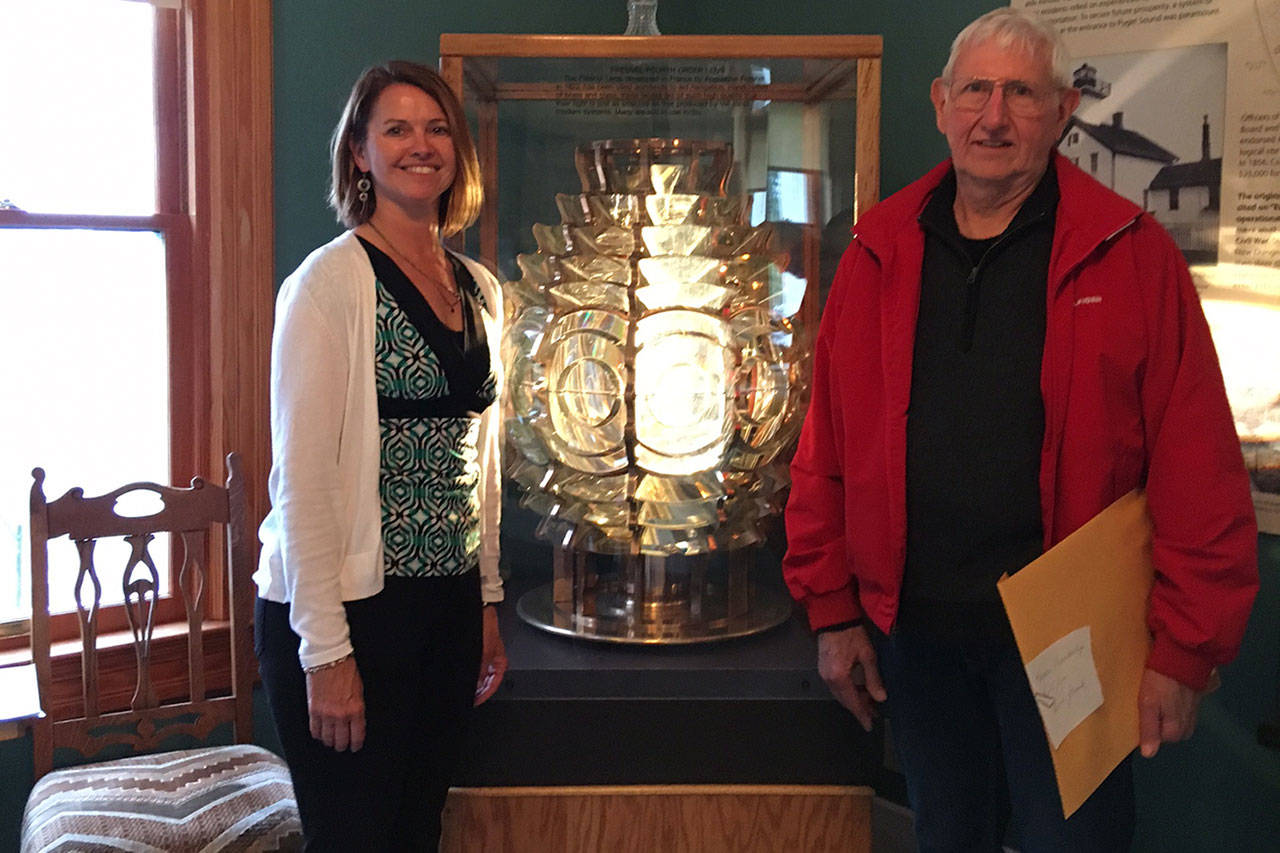A piece of history is back in working order at Admiralty Head Lighthouse.
An 1800s rotating Fresnel lens that sat stationary for an estimated 14 years is back in motion thanks to the help of an Anacortes machinist.
“When I came on staff it became one of my pet projects,” said Sharon Young-Hale (formerly Sharpe), program specialist for Washington State Parks. She had been looking for someone who had the qualifications to rebuild the rotating mechanism, which sits below and acts as a base for the very large lens.
Young-Hale found Bill French, a man from Anacortes who initially volunteered his time to get the lens rotating again. In the end he donated both his time and the cost of repairs.
“It was a super awesome blessing,” Young-Hale said. “Now we have a fully rotating Fresnel lens.
“We’re pretty excited about it.”
French did not return calls for comment.
The Fresnel lens is a type of compact lens originally developed for lighthouses by French physicist Augustin-Jean Fresnel. A Fresnel lens can capture more oblique light from a light source, allowing it to be visible over greater distances. Lenses came in different sizes, from the largest Hyper-Radial lens to the smallest Eighth-Order lens.
Admiralty Head lighthouse has two Fourth-Order Fresnel lenses on display — one fixed and the other now-rotating lens.
“We’re the only lighthouse I’m aware of that has two Fourth-Order lenses on display,” Young-Hale said. “They really are a piece of art.”
“The technology to put them together is amazing.”
According to the United States Lighthouse Society, the cost of a Fourth-Order lens was $1,250 and they weigh 441-661 pounds and are nearly 29 inches tall.
“Each light signature is different, that’s how ships know where they are,” Young-Hale said.
The original lighthouse, known as the Red Bluff Lighthouse, was built in 1860 and became operational Jan. 21, 1861. Red Bluff Lighthouse employed a fixed, Fourth-Order Fresnel lens in its nine-sided lantern room to produce a white light at a height of 108 feet above the inlet.
In 1899, the lighthouse was relocated to make room for the creation of Fort Casey, and in 1901 $12,000 was appropriated for the construction of a new lighthouse. The light was activated atop the new lighthouse on June 25, 1903, and the original lighthouse was repurposed to house noncommissioned officers and, for a short time, a temporary medical clinic.
In 1928, the wooden lighthouse was torn down and the lumber used to build a house on Whidbey Island.
The new lighthouse was decommissioned in 1922. It’s not known where Admiralty Head’s original lens went, Young-Hale said. After the lighthouse was decommissioned, that lens went to the lighthouse in Dungeness Spit near Sequim.
“We don’t know where it went from there,” she said.
Both Fresnel lenses are on display at the lighthouse, which is open 11 a.m. to 5 p.m. daily through the summer. It is run by volunteers, who are always needed.
Fort Casey will also be hosting a celebration Aug. 5 for National Lighthouse Day in which French will be recognized for his work on the lens.


